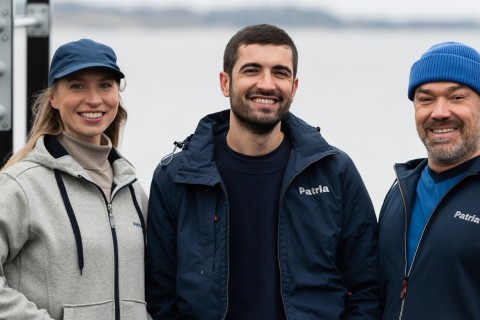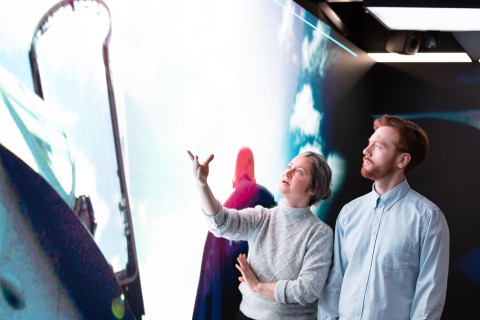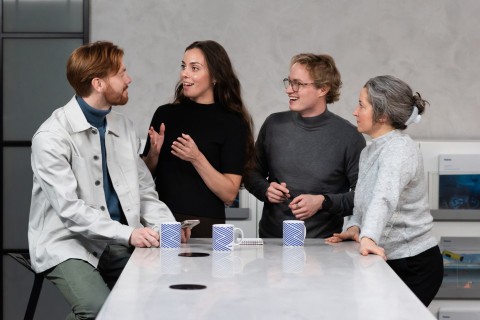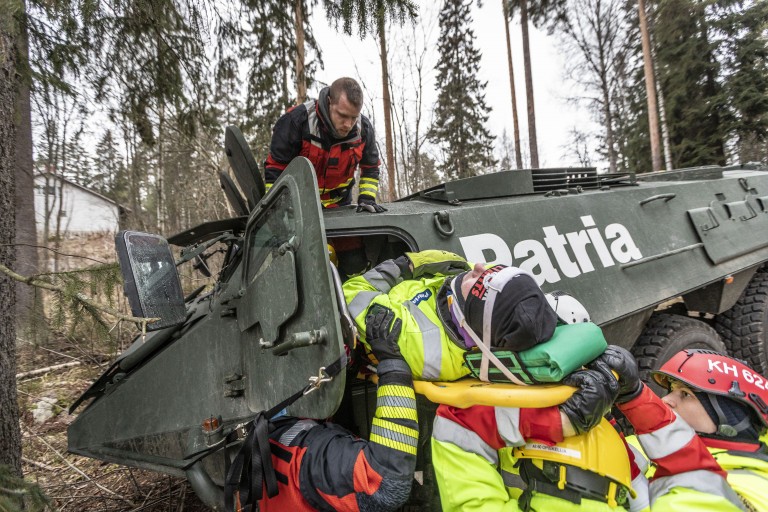
VL Myrsky II Restoration Project gains visibility through an animated film made young people
2.5.2016
The eight-minute long animated film Myrsky – haaveita hävittäjästä (Storm – Dreams about a fighter plane) completed in June 2015 was received with great enthusiasm at the premier and various aviation shows. A continuation sequence will be completed within one year to the animated film made from start to finish by unemployed young people. VL Myrsky II Restoration Project will continue until 2019 under the sponsorship of Partia.
The restoration project, started in the spring of 2014, wanted to involve in the work students of vocational colleges and unemployed young people attending the workshops organised and run by cities. As the main sponsor of the restoration project, Patria wants to sponsor especially young people in danger of social exclusion. The communications and interaction workshop of the City of Vantaa participated in the project’s communication activities by producing the animated film Storm – Dreams about a fighter plane.
“The film is loosely based on the birth history of the VL Myrsky fighter during the war, but the young people rendered the storyline in a more humoristic and fictional direction. I believe that this was an empowering experience for the young people. They discovered to possess skills that they had not previously been aware of. The premier of the film at the auditorium of the Finnish Aviation Museum was a success, with an audience of about 90 people,” says social director Soili Pentikäinen of the communications and interaction workshop. The film has been running at the Finnish Aviation Museum and it has been shown at several aviation events across Finland, and it is also offered to short film festivals. Feedback has been very positive.
Animated film made by cooperation and joy
Young people attended the workshop for periods of approximately six months each. Janika Kinnunen started in the workshop in the spring of 2014.
“Film making started by making the puppets. The puppet I made is one of engineers. Ambiance at the workshop was good, and we all supported one another. We built scene backdrops, props, model planes and other miniature models. Finally, I was allowed to participate in the actual animation work at the film set. My foremost memory is that we all shared a schedule-based target towards which we worked. I think that it is great if our delight in doing things left its mark in the final film. The passion and motivation of the people in charge of the restoration work were passed on to us too. I learnt resilience and persistence. In the course of making the film I made a great many good texts and photographs for my portfolio which I can present when applying for a job. I am currently employed by the Forssa Museum,” Kinnunen tells. Joonas Nurmi came on board when approximately one third of the film was completed.
“My contribution was mainly related to animation, i.e. I moved the puppets and operated the camera recording the shots. During the project, I became interested in the history of the Myrsky fighter for a particular reason, namely because the original design and manufacturing process was faced with so many hardships and obstacles. At the premier the young people of the workshop considered the film to be funny. For myself the greatest benefit afforded by the project are the computer skills which I acquired in connection with animation work. This is something that is quite impossible to try one’s hands at in the real life outside a school. In addition, I understood more clearly what I want to study. I will apply for admission to Helsinki Vocational College,” Nurmi says. Vili Vrtanen, who was involved in the final stage of the film, was admitted to study AV production at Helsinki Vocational College.
“I am currently in non-military service, and my studies will start in the autumn. This project and the workshop were of a great help in my being admitted to school and selecting this particular field of study. It was nice to observe the facial expressions of spectators at the premier. At least the children seemed be grasp the humour. I am proud of the final outcome,” Virtanen states. The project will be continued, because the communications and interaction workshop will make three animated films in all. The second sequence will describe the fate of fighters after the war, while the third one will focus on the renovation project.
VL Myrsky II Restoration Project is steady on course
The restoration of VL Myrsky fighter is mainly carried out under the responsibility of Aviation Museum Society’s volunteer members belonging to the so-called Tuesday Club, most of whom are in retirement. Project manager Matti Patteri holds the strings. The young people from the vocational colleges help out in the restoration work.
“We are now starting the second stage of renovation, working on the wing spar structures. At the same time we are carrying out some structural strength tests. A team comprising a couple of men is constructing the wing ribs under the auspices of the Tuesday Club. For the past few months we have been constructing the fuselage formers, which are now complete for the most part. During the last year, we were active in constructing e.g. the steel tube frame and the tail section to which some of the components of the horizontal stabilisers are attached,” Patteri tells.
This year young people will participate e.g. in the construction of the wing jig at Varia Vocational College, and the plywood fuselage cover structure will be constructed at a youth workshop in Vantaa. The students of Rovaniemi Vocational College are interested in creating a virtual model of Myrsky.
Project manager Janne Salonen wishes to remind that all aviation museums in Finland are currently experiencing an acute need of additional space.
“Despite Myrsky will be part of the collection of Finnish Air Force Museum, there is simply no space available in any aviation museum for the fighter. We can only hope that the space problems will be resolved by 2019 when the fighter will be ready for display. Myrsky will be restored, and partially reproduced, to a state reflecting its construction time, but it will be structurally more transportable than the original aircraft. Having the fighter on display e.g. at trade fairs as well as aviation events and shows is vital,” Salonen says.
Read more of the Myrsky restoration project in the Myrsky Magazine and blog at www.vlmyrsky.fi
What did you like about the article?
Thank you for your opinion! You can share the article on social media using the buttons below:


























